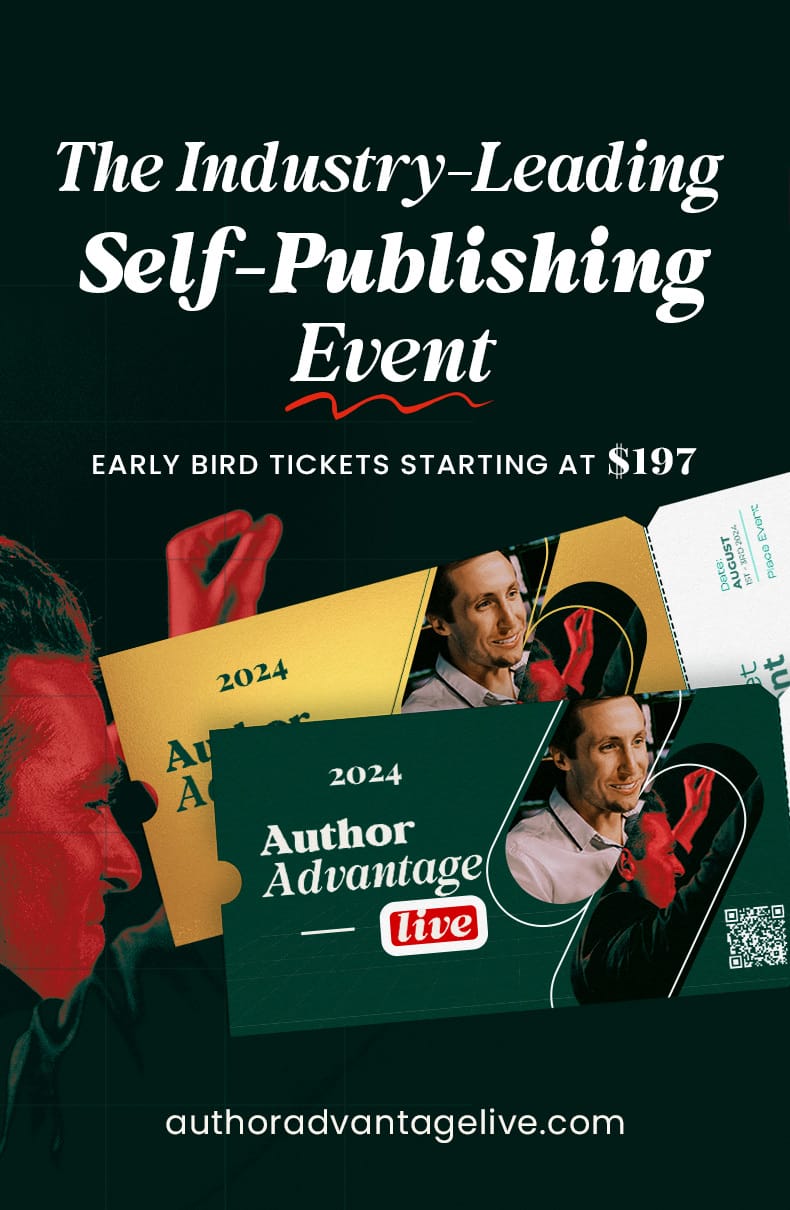
By Judy Probus (@JudyProbus)
Designing a book cover can be daunting task. Where should you start? How can you make it look good? What should you avoid? We often address issues on this topic in the comments of our monthly e-Book Cover Design Awards. In today’s post, author Judy Probus offers her advice on how to tackle the task.
So, you survived the gauntlet of rewrites, the flood of red ink your editor poured on your pages, and countless sleepless nights you spent worrying about how to tie the story together. Finally, you put the last period at the end of your tale’s final sentence with a heavy sigh and a hopeful cheer. Congrats! You have a manuscript.
But, if you are an independent author, the journey has only just begun.
Buckle up and blast off into another realm on your book journey because, like every newborn baby, your new manuscript is buck-naked. Your next destination: the world of book cover creation.
Every reputable book has a cover. Paperback and hardback books have front and back covers. E-books are a little more manageable – they only require front covers. The good news is that a Starfleet of artists wait with pens, paintbrushes and computer mice in hand to join you on your quest to make a cover that is every bit as good as the story it protects.
Whether we like it or not, readers do judge books by their covers; therefore, all of your hard work is on the line when going through this part of your self-publishing journey. Do NOT take this step lightly.
It’s up to you to pull together a team that will create a captivating, dynamic piece of art that will encourage prospective readers to pick up your book and give it a chance.
So, what are some ways to ensure your cover will pop instead of sizzle? Here are my five keys to book cover success:
-
Front-load the work
I love Abraham Lincoln’s quote, “Give me six hours to cut down a tree and I will spend the first four sharpening my axe.” Why? Because anything worth doing well requires a great deal of preparation work and is often riddled with failure before it succeeds. Just ask Thomas Edison.
It took me four years to finish the first book in my adventure fantasy series because I needed to sharpen my skills, conduct research, and gather feedback from my editor and beta readers.
Although creating a book cover isn’t as tedious as writing a novel, it has its challenges, especially if you have high expectations, which you deserve to have. To increase your chances of enjoying the book cover design process and what it produces, put in the prep work before you start searching for your cover artist.
Because very few cover artists will have the time to read your book in its entirety, start by fleshing out a synopsis of your book and earmark a few of its key passages. You are the creator of the book. It’s your responsibility to convey the essence of the story. No one can do this like you can. What you share serves as the springboard for the book cover. You need a kick-butt artist. They need an author willing to provide detailed character and plot descriptions to help breathe life into their skillset.
Next, go to your local bookstore and look at your competitors’ book covers. My editor and I spent hours at bookstores evaluating covers. Also, watch other people look through the books. Which books do they pick up? Which books do they buy? Look at those covers. Ask yourself – or better yet, ask the reader – what element(s) caught your eye?
Next, go to Amazon.com or BarnesandNoble.com and sift through the covers belonging to the books in your genre. Ask yourself what cover(s) pop off the page. Why? Why not? Ask a friend to do the same. Jot these characteristics down and communicate them to your cover artist. Review them throughout the design process to make sure you’re hitting the mark.
Finally, know what dimensions your cover will be. Like people, books come in all shapes and sizes. The conversations you will have with your artist (and eventually, your printer) will be easier if you are familiar with the language they use. The internet is full of sites that explain formatting and printing terms such as CMYK, RGB, binding, bleed, crop marks, grayscale, gutter, perfect bound, etc. Study these resources.
-
Search everywhere
Surf the web with the determination of a ninja warrior. Compare services, communication skills, cost, experience in your genre, and how many tries you will be granted to get the cover right. Levels of quality and professionalism vary. It’s confusing. It’s maddening. It’s global!
We ended up selecting three artists to team up with us on our project – two to do the cover art and another to do the map and character sketches included in the supplement.
We found all of them online. How? We conducted extensive searches using Google Image Search, Dribbble.com and DeviantArt.com. We used keyword phrases like “dragon sketches,” “dragon illustrations,” and “fantasy creatures.” We poured through the images that resulted. If we found one we liked, we tracked down the artist by filling out their contact form or sending them an email or Tweet to request a phone call or Skype chat.

To us, our artists had to be talented, have a passion for our story, and have great communication skills. Although we wanted to work with a local artist in Kentucky, we found more options across the globe. We found it quite manageable to work virtually with cover artists from Argentina and a sketch artist from Pennsylvania.
-
Communicate consistently
Once you have selected an artist, establish frequent and consistent communication. No question is a dumb question. If repeated emails and phone calls have only resulted in frustration and you are starting to feel like your comments are not being given fair consideration, it’s time to rocket off to another realm.
Do not settle for poor communication even if your artist is excellent at his or her craft. This can be more challenging if you are working with someone on the other end of the globe, considering possible language barriers and time zone differences, but it is possible.
-
Make your design simple, actionable, and mysterious
These were the three key traits we prioritized:
- The typography and artwork have to be simple so that they are ascertainable even when the dimensions of the cover are reduced to a thumbnail image, such as what you’ll see on Amazon and Barnes and Noble’s websites.
- We believe a cover’s design should depict action for it to successfully engage an observer. When you have movement, a reader involuntarily tends to want to connect the dots, asking, “What are they doing? Why is this happening? What will come next?”
- You don’t want your cover’s design to give too much away. For instance, if your book has two enemies that end up falling in love, then don’t show them embracing each other on the cover. A good cover should make its viewer ask more questions than it answers.
-
Go the extra mile
Your book’s cover is very, very important – especially if your story is intended for a young audience (who tend to make snap decisions that even they can’t explain – God love ‘em). It is a crying shame when an author spends countless hours creating a masterpiece only to jump onto a website like Fiverr.com to outsource the creation of what ends up becoming a very mediocre – and sometimes awful – book cover. Do not be that author!
If you are on a tight budget or if you are strapped for time, then you may want to look into possibly using 99Designs.com or teaming up with a student from a local college or university. Although I have not travelled down these paths, I have heard these can be good resources.
Designing a book cover is like building a house. The author must depend on reliable and creative sub-contractors. Take the time to locate artists and printers who have solid reputations, show sincere interest in your project, and are as committed to creating something as exciting and as unique as you are.
How did you create your book cover and what tips would you add to my list?
 Judy Probus is the author of the adventure fantasy novel ImagiNation Unveiled: The Hidden Realm. Her husband Bill and extended family reside in Kentucky, “the Unbridled state” – a perfect place and state of mind for a writer of adventure fantasy tales. Judy possesses a B.S. and Masters in Education, experience in the performing arts and teaching, and has volunteered countless hours in the local school system. Besides writing, Judy enjoys reading, listening to music, watching sports and movies, gardening, traveling, and learning new things about Earth and beyond. Discover Judy’s imagination and what inspires her to write at https://imaginationunveiled.com.
Judy Probus is the author of the adventure fantasy novel ImagiNation Unveiled: The Hidden Realm. Her husband Bill and extended family reside in Kentucky, “the Unbridled state” – a perfect place and state of mind for a writer of adventure fantasy tales. Judy possesses a B.S. and Masters in Education, experience in the performing arts and teaching, and has volunteered countless hours in the local school system. Besides writing, Judy enjoys reading, listening to music, watching sports and movies, gardening, traveling, and learning new things about Earth and beyond. Discover Judy’s imagination and what inspires her to write at https://imaginationunveiled.com.
Photo: bigstockphoto.com Amazon links contain my affiliate code.



